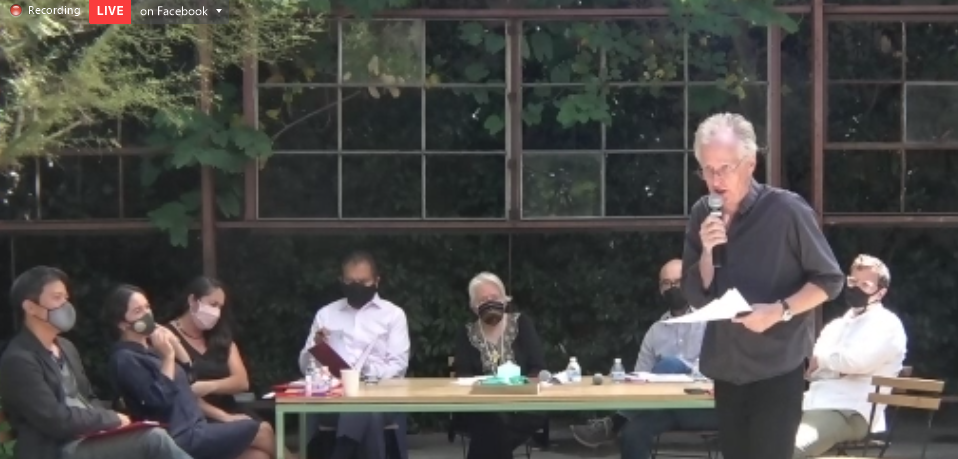Residents Throughout the County Support River Revitalization as Much as Residents Who Live Near the River
LOS ANGELES — Most Los Angeles County residents are familiar with the Los Angeles River and the vast majority support river revitalization efforts despite the fact that fewer than half of them have ever visited the river and only one out of 10 have visited the river many times.
When asked what comes to mind when they think of the Los Angeles River, “dirty,” “concrete,” “dry,” and “homeless” are among the top words that people use, but also “water” and “river.”
Only one out of five residents are aware of the County’s new master plan for the river, but large majorities support many of its goals for improving the river and believe that it could become a world-class attraction, like rivers in San Antonio, Seoul, and Madrid.
These are among the findings of the first-ever multilingual public opinion poll focused on the Los Angeles River conducted by the Thomas and Dorothy Leavey Center for the Study of Los Angeles at Loyola Marymount University in collaboration with Ethnic Media Services, a nonprofit organization, and the Laboratory for Environmental Narrative Strategies at UCLA. The poll was conducted in English, Spanish, Chinese, and Korean, the top four languages spoken in Los Angeles County.
“Our poll found that Angelenos are brutally realistic about the state of the L.A. River,” said Fernando Guerra, director of StudyLA at LMU. “But they are also realistically optimistic. They see what needs to be done to revitalize the river that runs through our region and they support those efforts. And, for the first time, we’re hearing a clear message from a representative sample of all Angelenos that they want to get this done.”
“We did find some revealing and intriguing nuances in the preferences and priorities for revitalization efforts among different demographic groups,” said Sandy Close, director of Ethnic Media Services, which provides briefings, advertising, and other support for hundreds of ethnic and community media outlets nationwide. “What is inspiring,” Close added, “is the consistency of support across L.A.’s diverse demographic groups.”
Survey respondents said creating habitat for plants and animals and capturing stormwater for future use before it gets to the ocean should be a high priority, as well as flood control, ensuring that residents are not displaced by new developments, making the river accessible, building more parks, and recreation on the river. While residents living within a mile of the river support recreation on the river more than residents living farther away, support for other priorities is consistent no matter where residents live. A large majority of residents throughout the county would like to see more bike and pedestrian paths, parks, and access points on the river.
Walking and relaxing are the most popular activities for visitors to the Los Angeles River, followed by cycling, birdwatching, picnicking, fishing, and kayaking or floating. Residents with children in their households are more likely to have done these activities than residents without children and are more likely to support improved recreational opportunities on the river.
Residents have concerns about revitalization efforts, too. A majority is concerned that revitalization efforts will lead to an increase in homeless encampments along the river, increased taxes, and gentrification that will displace current residents. Low-income residents and renters are especially concerned about gentrification and displacement.
Latino residents are more concerned about displacement, more supportive of creating parks and natural areas than other groups, and are split evenly on whether they would support or oppose a tax increase to pay for revitalizing the river, where a majority of other groups are opposed to a tax increase.
Most of the responses in the poll reflect a realistic assessment of the Los Angeles River and a pragmatic view of the benefits and risks of revitalization. A majority of residents would like to see concrete removed where feasible to create natural areas, although they also support keeping concrete the way it is to control flooding.
But there is also a strong ecotopian stream in public opinion about the river. About half of Los Angeles County residents said they would like to see all the concrete removed and return the river to its natural state, an outcome that is highly unlikely given the need for flood control, which an even larger majority of residents also recognizes and supports.













